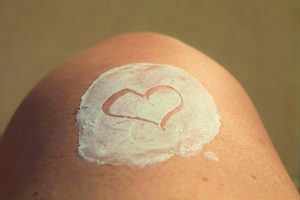Two in three Australians will be diagnosed with skin cancer by the time they’re 70. It’s a sobering statistic, and one that we urge all of our patients to take seriously.
It’s so important to check your skin regularly and tell your doctor as soon as possible about any moles that you’re concerned about. Become familiar with your skin and look out for:
- crusty sores that don’t heal
- small lumps that are red, pale or pearly in colour
- new spots or freckles
- any moles changing in colour, thickness or shape over a period of weeks or months (especially those dark brown to black, red or blue-black in colour).
Our team of GPs at Family Doctors Plus is experienced in skin cancer diagnosis and treatment. We have a dedicated skin cancer treatment space with state-of-the-art equipment for excisions. Book a standard appointment with us to have your skin checked.
Skin cancer myths
Here are some of the common misconceptions around sun exposure and skin cancer. You can read more and find excellent resources for understanding and preventing skin cancer on the Cancer Council Australia website.
I don’t burn easily, so I’m not likely to develop skin cancer
While sunburn causes 95% of melanomas (the most deadly form of skin cancer), sun exposure that doesn’t result in burning can still damage skin cells and increase your risk of cancer. Evidence suggests that regular exposure to UV radiation year after year can still lead to skin cancer.
A fake tan will help protect me from UV rays
We all should know by now that there’s nothing healthy about a tan, but misconceptions persist about fake tanning products. A fake tan will not provide you with protection against UV radiation, so you still need to take the usual sun protection measures.
Solariums are ok
Nope! In January 2016, all commercial solariums were banned in all states in Australia. They emit UVA and UVB radiation – both known to cause cancer.
If it’s overcast I’m less likely to burn
Don’t be fooled by cooler or overcast weather. UV radiation can be just as strong on these days, and you can still get sunburnt.
 I don’t need to put much sunscreen on
I don’t need to put much sunscreen on
Most people don’t apply enough sunscreen, resulting in only 50-80% of the protection stated on the product. Cancer Council Australia recommends:
- at least a teaspoon for each limb, front and back of the body
- half a teaspoon for the face, neck and ears.
Use broad-spectrum, water-resistant SPF30+ sunscreen, applied 20 minutes before you go outside and every two hours after that.
Using sunscreen on babies is harmful
The best option for protecting a baby’s skin is to:
- keep them out of the sun during the middle of the day
- cover their skin as much as possible with clothing/wraps and a hat
- use a broad-spectrum, water-resistant sunscreen on any sun-exposed skin.
There is no evidence that using sunscreen on babies is harmful. Try sunscreen milks or creams for sensitive skin to minimise the likelihood of irritation. If any unusual reaction occurs, discontinue use of that product.
